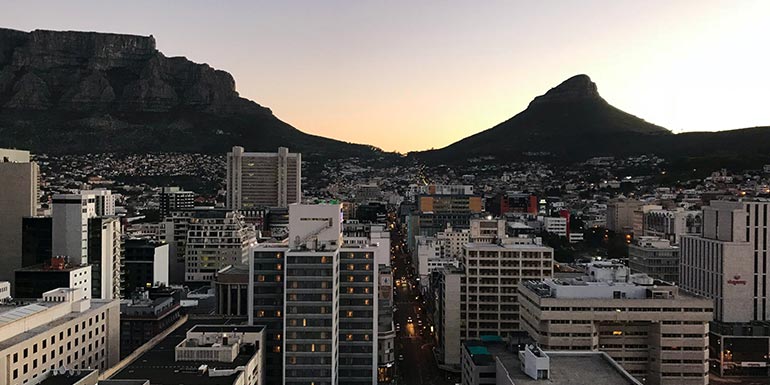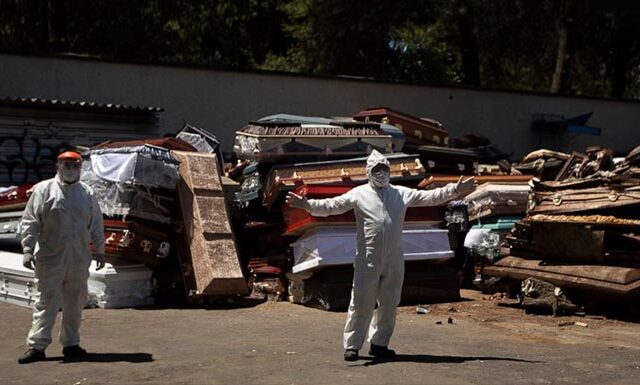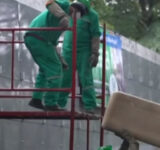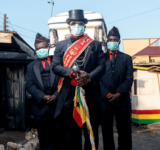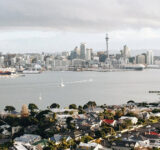The South African Cemeteries Association (SACA) calls out the local government to make plans for worst-case scenarios.
South Africa currently has the largest number of coronavirus cases in Africa and is attempting to curb the rising number of infections through lockdowns and rolling out mass testing.
While the first deaths just started in the country at the end of March the numbers are quickly growing, which is why the South African Cemeteries Association is attempting to reach government officials and municipalities to be prepared for an increase in the death rate.
While precautions are in place the association believes “our socio-economic conditions will nevertheless pose an incredible challenge to achieve the objective of containment measures. A large section of our population in excess of 5 million live in informal settlements and an even greater number (an excess of 13 million) live in townships. High density living as a result of this and other circumstances that force people together is unfortunately ideal for the spread of the pandemic. It is also evident that with high infection levels there will be an expected level of fatality.”
The association additionally states that “In anticipation of the increase in the death rate, municipalities are recommended to put plans in place if this has not already been done. Ideally remains should be cremated as is advised by the health authorities locally and internationally, however, this may pose a challenge as South Africa has very few crematorium facilities. The following recommendations are provided to guide municipalities.”
The South African Cemeteries Association Guidelines for the Preparation of Mass Burials and Cremation of COVID-19 Victims
Burials
- Identify land within cemeteries to be prepared for emergency burials for bodies identified as infected. If this is unavailable, then consider adjacent vacant land to existing cemeteries that may be expropriated if private or incorporate it into the existing boundary of the cemetery if the land is municipal owned.
- Identify any other suitable state owned or municipal land if the above option is not available.
- Consideration must be given to suitability of land with regards to distances from communities and residential areas, high water tables and water sources.
- Current legislation requires cemeteries to be located 350m from groundwater sources used for drinking purposes and at least 500m from the nearest habitable building.
- The preferred burial site should have a soil of sand-clay mix of low porosity and a small fine-grain texture; the water table should be at least 2.5m deep in order to allow for a traditional grave depth of six feet (1.8 meters).
- For areas with higher water tables, the local government may determine a reasonable depth with additional walling recommendations to protect underground water; and the covering soil shall not be less than 1m, should two bodies be buried in the same grave, 300mm of soil shall be maintained between the coffins or bodies.
- SACA advises that in a state of emergency or national disaster exemption for relaxation from existing environmental regulations (above) may be required.
- Application for the relaxation of environmental regulations may include the distance between the burial ground and residential area reduced to 100m. (WHO recommends 100m-500m)
- Water table requirements reduced to less 2.5m but greater than 2m if burying two bodies per grave or no less than 1.8m if burying a single body per grave. There should be a level of soil of at least 0.5m between the water table and the barrier/ plastic lining.
- Reduction of the distance between the burial site and water sources like rivers, lakes etc to 100m. (WHO recommends 50m)
- Plastic linings similar to that used in landfilled sites for the prevention of leachate should be used. This should not be biodegradable.
- Bodies should be buried in clearly marked, individual graves, although multiple trench communal graves may be unavoidable in mass disasters.
- These graves should have a numeric or other recognisable grave marking system so that associated details of the deceased can be recorded against the relevant number.
- Graves should ideally be assessible from at least two sides to allow access at a later stage by families, or for exhumation if the threat of infection is later eliminated and families request this.
- The paths between trenches must be wide enough to allow for mechanical backfill which is the preferred least labour-intensive method.
- In mass trench graves bodies should be spaced at least 0.5m apart with clearly set permanent beacons identifying the ends of the trench grave site in order to identify burials of individual through measurement.
- If bodies are to be buried above each other in trenches, then soil must be backfilled to achieve 0.3m between bodies. The record must also indicate the position of the body in the grave in terms of bottom to top.
- Burials should be conducted during the day in clear weather to prevent complications with collapses and falls and to ensure good visibility for recording.
- Details of personnel employed in the exercise will need to be kept for further reference if required.
Cremation
- Whilst cremation is the preferred method for the treatment of covid19 infected bodies there are few crematoria available. Consideration should be given to using incinerators and also procuring portable cremators or incinerators. The challenges for procurement could take over 6-8 weeks.
- Storage facilities need to be functional or increased by the use of portable refrigeration containers which may accommodate approximately 100 bodies per container.
- All existing/new/portable storage facilities must be certified compliant by an environmental health practitioner operating within the local authority.
- Observe strict personal hygiene and put on appropriate personal protective equipment including gloves, water resistant gown / plastic apron over water repellent gown, and surgical mask. Use goggles or face shield to protect eyes, if there may be splashes.
- Do NOT smoke, drink or eat. Do NOT touch your eyes, mouth or nose.
- Coffins brought into the crematorium should be sprayed and the path into the crematorium cleared and regularly sprayed.
- All surfaces which may be contaminated should be wiped with “1 in 49 diluted household bleach” (mixing 1 part of 5.25% bleach with 49 parts of water), leave it for 15-30 minutes, and then rinse with water. Metal surfaces could be wiped with 70% alcohol.
- Ashes once cooled may be packaged for the family and handed to the undertaker. Packages should be wiped down with bleach solution and handed over whilst ensuring good hand sanitation.
- After use, the disposable items such as gloves and protective clothing should be disposed of in a plastic bag.
- The above guidelines have considered recommendations from various accredited international and national organisations

